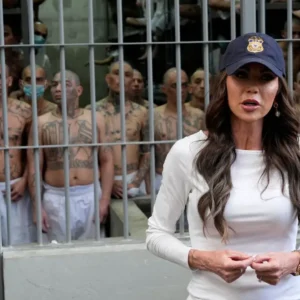In a striking demonstration of cross‐party unity, the U.S. House of Representatives voted 409–2 to approve the Take It Down Act, landmark federal legislation criminalizing the creation and distribution of nonconsensual, sexually explicit deepfake imagery. Co‐sponsored by a bipartisan coalition in both chambers, the measure now proceeds to President Trump’s desk, where it is expected to be signed into law.
This pioneering statute fills a critical gap in existing “revenge porn” laws by explicitly targeting manipulative artificial-intelligence techniques that generate hyperrealistic deepfake videos and images without a subject’s consent. By combining federal criminal penalties, platform-removal mandates, civil remedies, and enhanced protections for minors, the Take It Down Act establishes a multifaceted approach to swiftly remove harmful content and hold perpetrators accountable.
This article provides an authoritative, professional overview of the bill’s journey, its key provisions, the motivations behind its near‐unanimous passage, and the constitutional, technological, and practical considerations that will shape its implementation.
1. A Decisive Bipartisan Mandate
1.1 The Vote Breakdown
On [Date of Vote], House members from both parties coalesced around the Take It Down Act, approving the measure by a resounding 409–2 margin. Only Representatives Thomas Massie (R‐KY) and Eric Burlison (R‐MO) opposed the bill, citing broader concerns about potential free-speech overreach and definitional ambiguity. Twenty‐two members were absent or abstained.
The bipartisan support reflects shared recognition—across ideological lines—of the urgent need to address a novel form of digital exploitation that preys disproportionately on women, minors, and other vulnerable populations.
1.2 Congressional Champions
-
House Sponsors: Representatives Elvira Salazar (R‐FL) and Madeline Dean (D‐PA) led the bicameral push in the House.
-
Senate Sponsors: Senators Ted Cruz (R‐TX) and Amy Klobuchar (D‐MN) shepherded companion legislation in the Senate, which passed earlier this year.
In celebratory remarks, Senator Cruz hailed the outcome as “a historic milestone in the fight against deepfake abuse,” while Representative Dean emphasized that “this bipartisan victory shows Congress can unite to protect citizens’ dignity and safety in the digital era.”
2. From Campaign Promise to Law: Presidential Support
2.1 Trump’s Public Commitment
President Trump publicly endorsed the Take It Down Act in his March address to Congress, stating:
“The Senate just passed the Take It Down Act. Once it passes the House, I look forward to signing this bill into law. And I’m going to use it myself too, because nobody suffers more online than I do.”
While his quip drew mixed reactions, the president’s vocal backing ensured swift Senate approval and signaled his intention to sign the final bill promptly.
2.2 First Lady’s Advocacy
First Lady Melania Trump, through her Be Best initiative, has long championed online safety and the protection of children from digital harms. She convened a White House roundtable last month with survivors of nonconsensual imagery and technology executives, underscoring the bipartisan imperative to safeguard youth and adults alike. Her involvement helped solidify executive‐branch support for the legislation.





